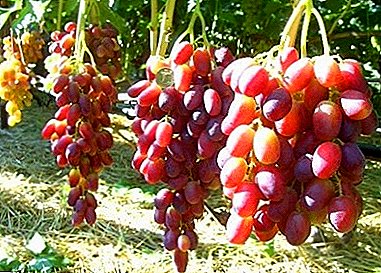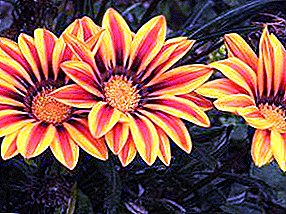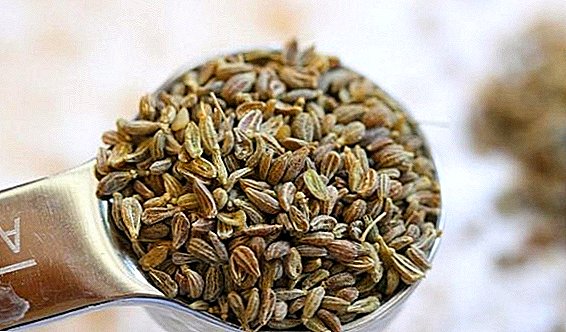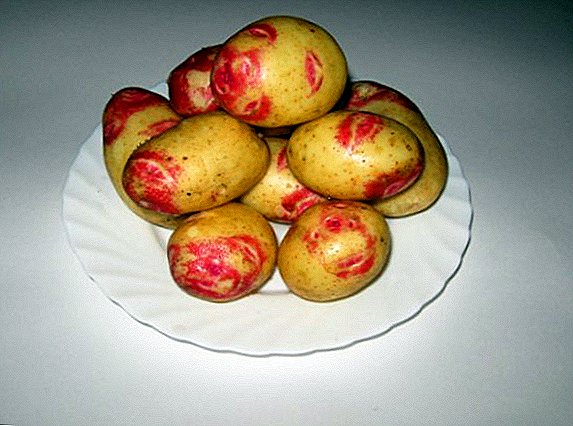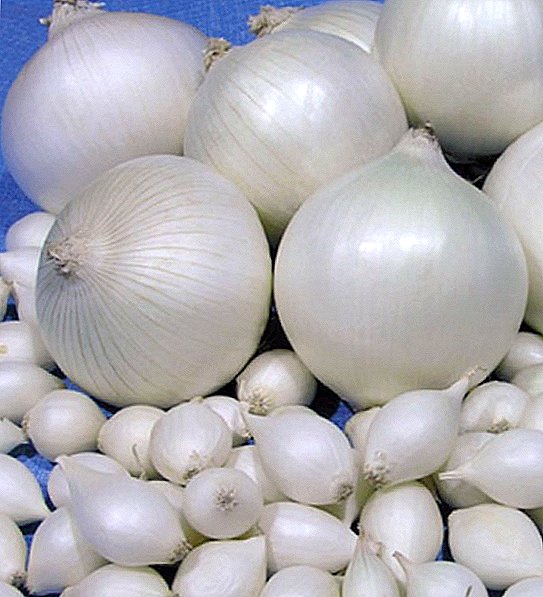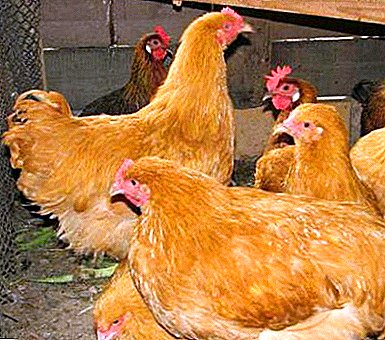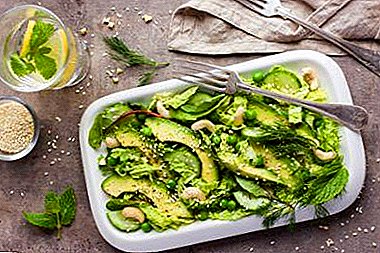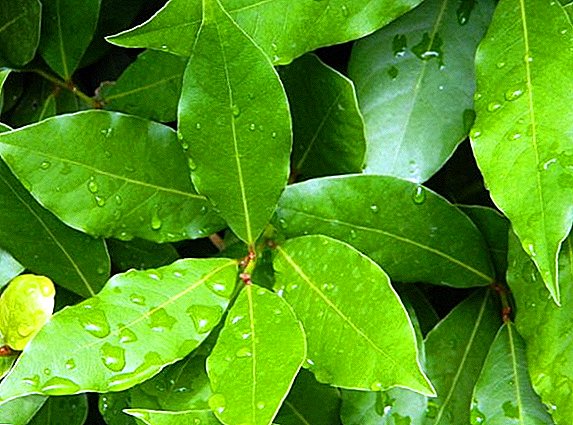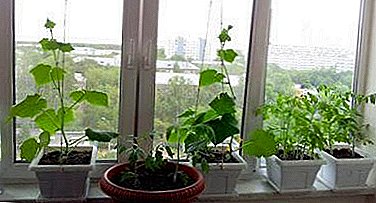
There is an opinion that the joint cultivation of cucumbers and tomatoes is unacceptable, but what if there is not enough space for keeping these vegetables in room conditions, but you really want to get the harvest of both crops? To do this, you need to understand the details of joint plantings.
In this article, you will learn about how you can plant cucumbers and tomatoes, as well as how to properly care for them, what diseases and pests can affect them and how to cope with them.
Is it possible to jointly grow these vegetables at home?
To succeed in the joint cultivation of cucumbers and tomatoes, although difficult, but possible, it is only necessary to create conditions in which each crop will not be affected by its needs.
Growing conditions for cucumbers and tomatoes vary significantly. But if at the joint cultivation to give preference to tomatoes, cucumbers will suffer a little from the dryness of the air, but nevertheless they will survive it. If, however, create conditions that are comfortable for cucumbers - tomatoes will no longer bear fruit and begin to hurt massively.
If in the conditions of an apartment there is an opportunity to maintain certain indicators, then it is definitely worth doing joint cultivation of crops — on a windowsill or apartment balcony.
Preparatory activities
Place and conditions
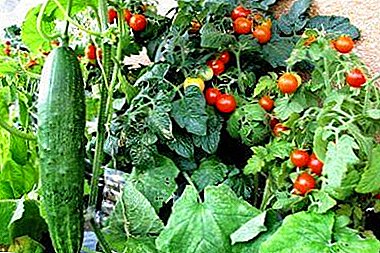 Cucumbers fruit at a temperature of 25-28 degrees, tomatoes at 22-25. It is worth stopping at a temperature of +25, which will suit both vegetables.
Cucumbers fruit at a temperature of 25-28 degrees, tomatoes at 22-25. It is worth stopping at a temperature of +25, which will suit both vegetables.- Tomatoes fall ill with a humidity of more than 70%, if you keep it below this value, cucumbers will be a little uncomfortable, but in general they are able to withstand it. Both plants gratefully perceive airing.
- The optimum location for crops is windows facing east or west.
- Between planting tomatoes and cucumbers on the balcony or windowsill, you can install a partition with a transparent film.
Special varieties
Tomato varieties for joint planting with cucumbers must be resistant to fitoftorIt is also advisable to opt for low-growing varieties and give maximum attention to the formation. From the presented assortment of cucumbers, it is worth choosing hybrids that are not particularly demanding for irrigation and humidity, as well as well-tolerated drafts.
It is better to grow short-varieties that will not interfere with the neighboring plants.
Pot
When choosing material for the pot is best to stay on the plastic - it is light and breathable. For tomatoes growing at home, both on the window and on the balcony, three-liter containers are suitable; for cucumbers, the pot size should be at least five liters.
Priming
You can purchase ready-made substrates "Tomato, Pepper", "Cucumber" or prepare a soil mixture yourself, mixing garden soil, peat and humus in equal proportions. You can also mix one part of peat and sand and two parts of leafy earth, or one part of garden soil and humus from compost with the addition of a glass of ash and a tablespoon of azofoska.
The resulting mixture should be shed strong solution of potassium permanganate for disinfection. At the bottom of the pot it is necessary to organize drainage. For these purposes, suitable pebbles, expanded clay or broken brick.
Landing process
Seeds
How to plant seeds on a window or balcony:
- Cucumbers are best sown in separate plastic cups.
- After they grow up, move to large containers in a permanent place.
- For good germination you need to maintain high humidity and conduct frequent watering.
- At this time, the seeds of tomatoes, which do not require high humidity, are sown in a container that is covered with a film before germination.
Thus, the necessary conditions for the maintenance of two cultures at the stage of seed germination do not overlap and do not conflict.
How to plant seedlings?
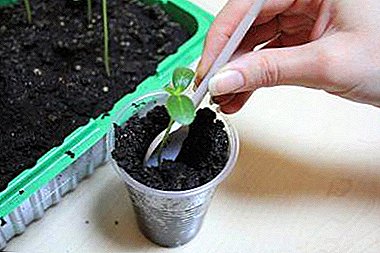 Pickup for cucumbers is done through the transshipment method, since they are planted one by one into a small container in a temporary place.
Pickup for cucumbers is done through the transshipment method, since they are planted one by one into a small container in a temporary place.- When picking tomatoes, plants are carefully removed one by one from the ground, the root tip is cut and transplanted one by one into large pots.
- From the moment of planting the seedlings to a permanent place, it is necessary to maintain conditions suitable for both cultures. The priority in this matter is to give tomatoes. Cucumbers should get a little less moisture and get used to frequent ventilation.
- The ground in the tanks should not be too wet, in such an environment the roots begin to choke and the plant dies.
- Watering should be carried out according to the scheme once every three days. After watering, it is necessary to loosen the soil. If the weather is cloudy, you need to move away from the schedule and water the plant less often, focusing on the degree of drying of the soil.
- The first dressing for tomatoes can be made 40-50 days after planting.
- The best fertilizer - humus, which can be purchased in the finished version in the store. It is added to the ground at a height of two centimeters, thanks to which the roots are saturated with oxygen and receive all the necessary nutrients for development.
- Watering cucumbers should be moderate, so as not to create excessive moisture, uncomfortable for tomatoes.
- The plant itself will tell you when you need to make dressing: the leaves will begin to dry out, the fruits will acquire a hook shape, and the small ovaries will die off.
- For cucumbers, it is desirable to apply nutrients by spraying, but when sharing home plantings with tomatoes, this procedure should be avoided and fertilizers should be applied directly to the soil.
- For dressings, you can use the universal organic fertilizer Ross.
Care
Watering and fertilizer
For tomatoes:
For cucumbers:
Trimming, pinching, pinching
All side shoots on the cucumber are removed, they only weaken the plantwhen twelve leaves appear it is necessary to pinch the top, this will contribute to the rapid maturation of already established fruits.
The dried lower leaves are removed from the tomato, the stems growing from the sinuses are removed (pinching), and pinch the tops.
With joint landings care must be taken that developing plants do not interfere with each other and did not braid the branches.
Props, hanging
When only a mustache appears in cucumbers, you need to stick a peg into the ground and tie up the stem. Considering the fact that for indoor cultivation it is better to choose undersized varieties of tomatoes, they will not need garters.
You can choose the method of hanging for tomatoes, dropping them into plastic bottles in a certain way and hanging them on any base.
Diseases and pests
Spider mite

It feeds on sap of leaves. In places of bites, small bright spots appear, which over time merge and lead to the death of the leaf. Control methods: timely detection of insect breeding centers and treatment with insecticides.
Gallic nematode

May be entered by all planting material, damages the roots. Control methods - replacing contaminated soil. For prevention - soil disinfection and seed dressing.
White fly

It feeds on the juice of the leaves, the affected plant is covered with soot fungus. The method of struggle is the mechanical removal of insects and spraying the plant with insecticides.
Brown spot of tomatoes

Fungal disease. It appears during flowering and fruit formation in the form of greenish-yellow spots, first of all from the bottom leaves, and then on the top leaves. Antifungal drugs are used to fight.
White Cucumber Rot

Fungal disease affecting the stems of cucumbers in the basal part. Fabrics soften, lick and become covered with dense white scurf. The fight against the disease is carried out with the help of fungicidal drugs.
Together to grow cucumbers and tomatoes at home is possibleThis is a laborious task, but it pays for itself. Getting a friendly harvest of different crops is possible with strict adherence to the scheme for the care and responsible attitude to the prevention of diseases.


 Cucumbers fruit at a temperature of 25-28 degrees, tomatoes at 22-25. It is worth stopping at a temperature of +25, which will suit both vegetables.
Cucumbers fruit at a temperature of 25-28 degrees, tomatoes at 22-25. It is worth stopping at a temperature of +25, which will suit both vegetables. Pickup for cucumbers is done through the transshipment method, since they are planted one by one into a small container in a temporary place.
Pickup for cucumbers is done through the transshipment method, since they are planted one by one into a small container in a temporary place.
